It’s fair to say that the stereotypical fanbases of pro wrestling and Dungeons & Dragons could not be more different. Yet over time, fans of one universe have discovered the other and found something else they could enjoy. And for good reason.
You see, the creative writers behind professional wrestling – yes, it’s scripted, and we wrestling fans know it – mold characters that clearly reflect the alignment system that is so integral to D&D and nerd culture in general. They may not sit in a boardroom at WWE headquarters and decide whether The Undertaker needs to be more lawful good or chaotic evil – he’s been both, I think – but elements of this system appear multiple times a week on WWE programming.
Want proof? Here are some examples from each alignment that have appeared in the squared circle in the last couple decades.
[bs_smart_list_pack_start][/bs_smart_list_pack_start]
Lawful Good – John Cena
John Cena has been the quintessential good guy, known as a “babyface” in wrestling 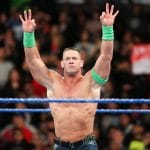 terms, for most of his run as the top guy in WWE. A 16-time world champion, he’s the current embodiment of Hulk Hogan’s classic “say your prayers and eat your vitamins” character.
terms, for most of his run as the top guy in WWE. A 16-time world champion, he’s the current embodiment of Hulk Hogan’s classic “say your prayers and eat your vitamins” character.
Beloved by kids and often loathed by adults, Cena places value on “hustle, loyalty and respect,” and he’s always chosen to honor the troops, breast cancer survivors or whatever partnership WWE is celebrating. He never cheats to win, and even tries to get other wrestlers to operate the right way. John Cena is so lawful good, you just want to slap him sometimes.
Neutral Good – Seth Rollins
Seth Rollins is relatively new on the scene, particularly for those who may have been 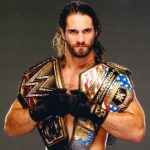 avoiding pro wrestling since the early 2000s, but he’s had a few different “alignments” over the course of almost six years in the company. Currently, though, he’s a prime example of a neutral good character.
avoiding pro wrestling since the early 2000s, but he’s had a few different “alignments” over the course of almost six years in the company. Currently, though, he’s a prime example of a neutral good character.
Rollins tries to win the right way, and is currently one of the company’s champions and top babyfaces, but he has a limit. He technically lost a recent match via disqualification when he decided to attack his opponent with a chair. Now, his opponent had been cheating the entire match, but that’s hardly the action of a lawful good character. Meanwhile, Rollins does win most of his matches the traditional way, so he’s not very chaotic these days.
Chaotic Good – Sting
Sting went through two major character phases – bleach-blonde Sting from the 80s and 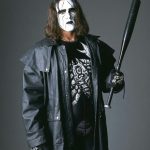 early 90s and the black-and-white Sting we’ve seen ever since. Yes, there was a brief red-and-black Sting, but we don’t usually talk about that.
early 90s and the black-and-white Sting we’ve seen ever since. Yes, there was a brief red-and-black Sting, but we don’t usually talk about that.
Specifically once he turned to the black and white face paint, Sting was a chaotic good character. His character shift came in reaction to the New World Order – which will come up later – and it helped define what good guys were going to look like in wrestling going forward. The NWO was an invading force, and WCW needed a hero. Yet in the on-screen response to the invaders, Sting’s loyalty to the company was questioned.
As a response, Sting became a brooding force that came down from the rafters to fight for good. He was never a bad guy, but he also always operated on his own terms. His later iteration in the WWE was similar, wreaking havoc on an oppressive Authority.
Lawful Neutral – Randy Orton
Randy Orton has been in the WWE for more than a decade, and he’s aligned himself in  a variety of ways, but many of them could be characterized as lawful neutral, at least to a degree. This is complicated somewhat by the fact that WWE’s on-screen authority figures are frequently more aligned towards the evil side, but it can work.
a variety of ways, but many of them could be characterized as lawful neutral, at least to a degree. This is complicated somewhat by the fact that WWE’s on-screen authority figures are frequently more aligned towards the evil side, but it can work.
Just a few years ago, for instance, Orton was the chosen man to act as an agent of The Authority – yep, that’s what the faux-but-not-really leadership group was called. He won the WWE Championship and kept it away from peak good guy Daniel Bryan, but what else was he supposed to do? He had won the championship through a legal method, and his bosses wanted him to keep it. That, after all, is the lawfully neutral thing to do.
Neutral – Brock Lesnar
Brock Lesnar may not fully fit the neutral description, but his more recent iterations are  as close to such as an entertainment medium built on good guys vs. bad guys is going to come. Lesnar, who has also been a champion in the less scripted world of mixed martial arts, recently became the longest-reigning world champion in the modern era of WWE, and he did so largely by not operating under anyone else’s rules.
as close to such as an entertainment medium built on good guys vs. bad guys is going to come. Lesnar, who has also been a champion in the less scripted world of mixed martial arts, recently became the longest-reigning world champion in the modern era of WWE, and he did so largely by not operating under anyone else’s rules.
He doesn’t appear regularly on television, and defends his Universal Championship belt whenever he good and well pleases. He frequently opposes the good guys, but he’s also handed out beatings to a couple bad guys and isn’t really friends with anyone. His scripted individual dominance and infrequent appearances place him separate from any sort of true alignment.
Chaotic Neutral – “Stone Cold” Steve Austin
While most of these entries have focused on a particular time period of a wrestler’s  career, “Stone Cold” Steve Austin’s entire career deserves attention on this scale. One of the most popular performers in wrestling history, Austin brought chaos and wild times to whatever side of the fight he found himself on.
career, “Stone Cold” Steve Austin’s entire career deserves attention on this scale. One of the most popular performers in wrestling history, Austin brought chaos and wild times to whatever side of the fight he found himself on.
More frequently a babyface and almost always beloved by the crowd, Austin was known to switch allegiances, most notably at WrestleMania 17 in 2001. After a historic feud with villain, or heel, authority figure and real-life boss Vince McMahon, Austin used a chair brought to him by McMahon to beat up Dwayne “The Rock” Johnson and win an epic match for the WWE Championship.
Lawful Evil – Vince McMahon
Speaking of Vince McMahon, wrestling has not produced a better example of the lawful 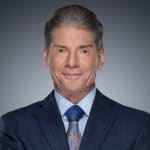 evil character alignment than WWE’s actual president and CEO. During the red-hot period of the late 1990s that the WWE, then the WWF, called the Attitude Era, McMahon was the chief bad guy, and a great one at that.\
evil character alignment than WWE’s actual president and CEO. During the red-hot period of the late 1990s that the WWE, then the WWF, called the Attitude Era, McMahon was the chief bad guy, and a great one at that.\
Perhaps no one in wrestling history has been as good at getting people to genuinely hate him as Mr. McMahon. He used the rules he created on screen to his own benefit and regularly made life difficult for fan favorites like Austin and others. And even when he teamed up with those favorites, it was always by getting them to join him in his dirty business.
Neutral Evil – Kevin Owens
In the modern era of WWE, Kevin Owens is almost too good at being a bad guy 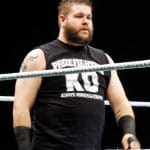 because he’s so darn enjoyable and humorous. But he’s definitely a bad guy, and a neutral one at that.
because he’s so darn enjoyable and humorous. But he’s definitely a bad guy, and a neutral one at that.
You see, sometimes Owens aligns himself with the lawful good side of things with The Authority – McMahon’s real daughter, Stephanie McMahon, and her husband, Triple H. In fact, he won his biggest championship because Triple H helped him win it. But other times, he plays by his own rules, cheats to win and turns his back on partners when it suits her personal goals.
Basically, Kevin Owens is going to do what’s best for Kevin Owens. Sometimes that means working within a system, and sometimes that means breaking all the rules.
Chaotic Evil – New World Order
No individual or group has shaken up the entire professional wrestling world like the 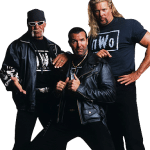 New World Order. The original iteration of the group, which debuted in WCW on July 7, 1996, included former WWF wrestlers Kevin Nash, Scott Hall and Hulk Hogan. Hogan’s inclusion in the mega-heel faction was so unpopular that fans at the event, Bash at the Beach, littered the ring with trash.
New World Order. The original iteration of the group, which debuted in WCW on July 7, 1996, included former WWF wrestlers Kevin Nash, Scott Hall and Hulk Hogan. Hogan’s inclusion in the mega-heel faction was so unpopular that fans at the event, Bash at the Beach, littered the ring with trash.
This group existed to disrupt WCW operations on screen. They added to the ranks and terrorized WCW establishment, even hosting their own Souled Out pay-per-view events and spray-painting their letters on Hogan’s world championship belt.
[bs_smart_list_pack_end][/bs_smart_list_pack_end]
WWE continues to add to and stretch the boundaries of what good guys and bad guys look like each week. When using this lens, viewers can see that there’s more to pro wrestling than sweaty dudes rolling around in their underwear.
It’s sweaty dudes rolling around in their underwear with a story!

